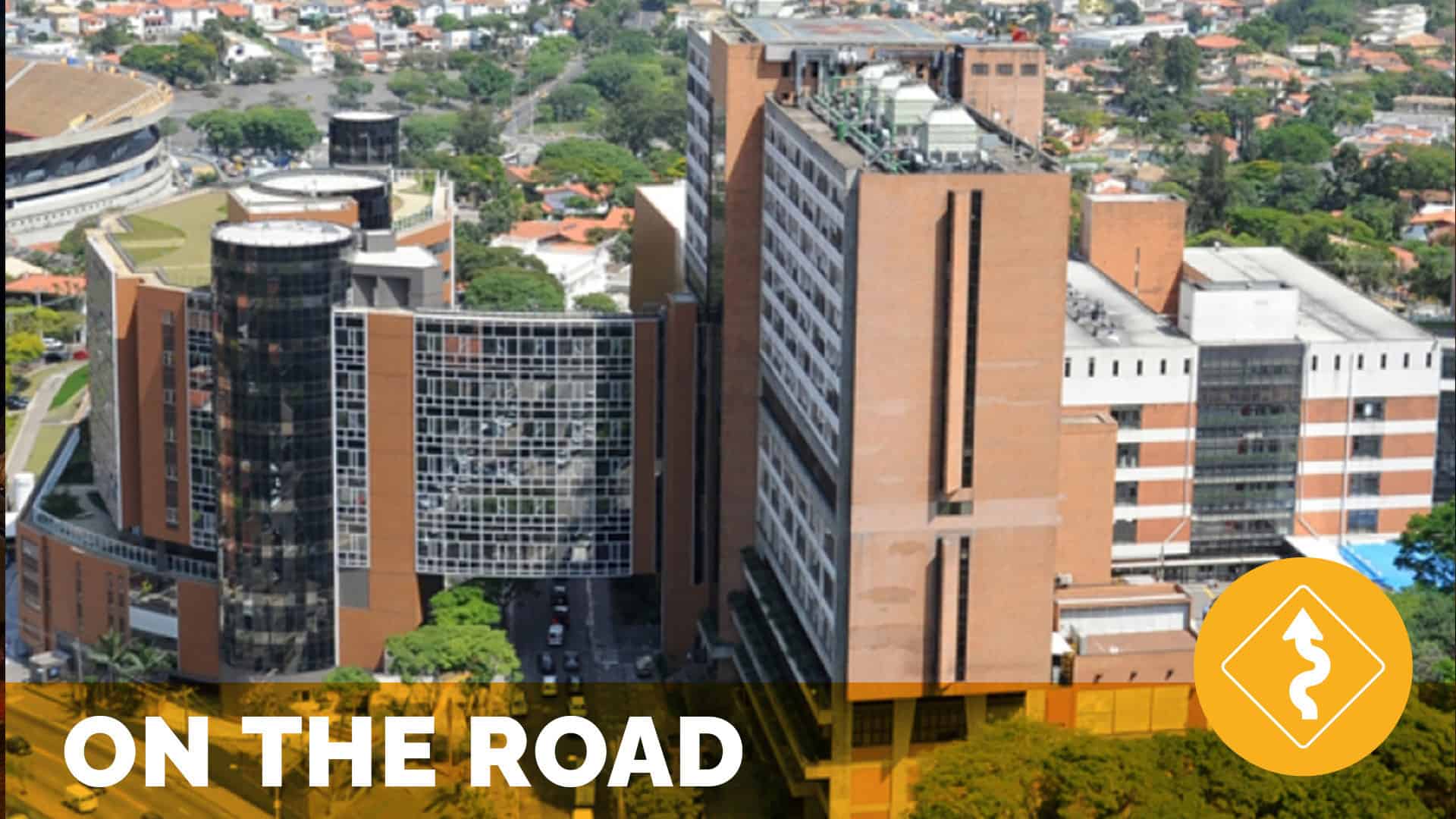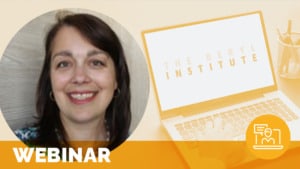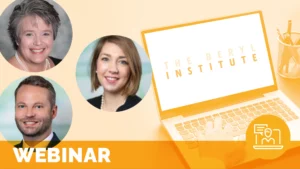A Foundation of Values for Patient Experience Excellence

On the Road with Hospital Israelita Albert Einstein, São Paulo, Brazil – June 2016
by Jason Wolf
A Perspective on Motivations
Our latest On the Road reinforced the fundamental global nature of patient experience. While various nations have seen systemic shifts in their healthcare organizations towards a focus on the patient and family (the consumer, customer, client, etc.) for which they care, one idea is emerging as fundamental. That patient experience matters in healthcare today.
Framing the Journey
The focus of my travel to Brazil and specifically to Albert Einstein, a leading healthcare institution in Latin America, was two-fold: one to explore and share the story of their commitment and focus on patient experience and two to participate in and support the First Latin American Symposium on Patient Experience. I spent two days getting a sense of not only the Institution’s flagship facility, but also with the visionary support and direction of President Dr. Claudio Lottenberg, I was provided the opportunity to engage in the very values on which it was built in its efforts to impact the community it serves by experiencing their commitment to social responsibility though a partnership with the public health system in São Paulo. This story is less about the practices, of which many are aware and attempting to implement in various ways, and more about the foundation on which those practices are being delivered.
Hospital Israelita Albert Einstein was built in the years after World War II as a giving back from the Jewish community in São Paulo for the welcome and comfort they were provided. The organization was established and still operates fundamentally based on the four core traditional Jewish principles: Good Deeds (Mitzvá), Health and Healing (Refuá), Education (Chinuch), and Solidarity and Justice (Tsedaká). These values, while perhaps not explicitly present in everyday efforts in the organization, were clearly the foundation on which it seemed every action was taken. Rather than a focus on values for values sake, these concepts are the glue that binds all the organization does in providing care for its community.
The Einstein journey began in the 1999 with focus on Joint Commission International Accreditation and a commitment to the quality standards this designation epitomized. The journey has been grounded in a focus on the concepts leading to a Planetree designation in 2011. This commitment to the Planetree Model had Einstein not only consider all aspects of patient and family centeredness at their facility, it led to Einstein’s establishment as an operating extension of the Planetree effort, working to expand the model to other facilities in Latin America. This focused path forward ultimately led to the leadership decision to launch a formal patient experience effort in 2014 catalyzed by Dr. Sidney Klajner (shortly after Patient Experience Conference 2014). This history of leadership focus and intention helped frame a formidable and aligned executive effort that in engaging all corners of the organization has been on a constant drive towards being the best.
This commitment to excellence was apparent not only in the statistics that show excellence in outcomes and the extensive global partnerships Albert Einstein has developed, but in the overall attitude exemplified by these senior leaders and the people of Einstein I met along my journey. Two key elements that I have experienced not only in my work, but personal research, that are aligned with high performing healthcare organizations today also came out in our opening conversation. First, a commitment to people, as was shared by Dr. Miguel, “our people make Einstein” and this was reinforced in almost every encounter I had in experiencing the commitment and passion of the Einstein team.
Second and most critical was the idea that “we are never good enough.” This statement is less a self-critique of lack of achievement, but instead a powerful and important realization that in healthcare if we get complacent because we think we have achieved or attained success, we don’t hold it long. This idea of constant learning, growing, acting is fundamental to not only sustaining organization success, but central to the idea that in healthcare today, a commitment to patient experience means we can never truly stop striving to be better. This was evident in the voices of this passionate and focused leadership team. It was exemplified in the staying power and passion of leaders that believe this was not just the right thing to do, but efforts that were fundamental to the excellence Einstein looked to achieve.
A Journey Through Einstein
As I share a few of the views I was provided of Albert Einstein, I will also highlight a few practices that stood out beyond many of the common themes we now see arising in organizations truly committed to patient experience excellence. While I do not have the room to share the full story of every place I visited, the powerful practices and ideas I experienced will be shared. These nuggets are often simple practices with significant impact for those being cared for and served as well as for those providing care. I start with our visit to the Rehab Unit.
We were welcomed to the Rehab area by Dr. Flavia Camargo and Fatima Gobbi in the waiting area. Before we even entered this integrated center bringing together all aspects of rehab I was welcomed by two powerful experience efforts. The first, a comment tree where people could leave notes about their experience tied to an actual tree in the lobby. This included the good, bad and ugly, but allows people coming to the organization to express themselves, publically and openly in a commitment to shared improvement.
I next had the chance to visit the ICU and speak with Dr. Felipe Piza and also some members of the multiprofessional team on the unit. Some of the central practices they have implemented include the ability for family members or caretakers to be present 24/7 and the application of multidisciplinary rounds (that are more frequently including patient and family members directly). They also provide patients and family members free and full access to their medical charts so they can ask questions and engage in their care. As Dr. Felipe said, “we believe patients and families deal much better with what they know than what they don’t know.” This is a profound, but important point central to patient experience.
I was introduced to a simple, but powerful means to engage patients and families in their care experience. Being piloted on the unit was a stop light sign showing three lights – red, yellow and green. The patient and/or family member could change the color of that sign at any time to address any care issues or other things arising for them. Green meaning all was fine at the time, yellow meaning some issues were arising that prompted a quick intervention and interaction with the care team, to red signifying a critical issue that elevated the conversation to the senior nurse and unit leaders to address. The sign represented an unassuming and safe way to begin a feedback conversation and in real time understand how the patient and family were feeling and what they were experiencing during their stay.
I had the chance to interact with a family of an ICU patient and engage them directly in a conversation of their experience as well. The patients son shared a powerful story of how on his way to see his mother he was treated poorly by the airline employees, but when he arrived at Einstein it was a whole different story. He shared, “When I arrived here all I found were smiles!”. His mother has had to come to the hospital many times in recent years and he shared, “Mom says this place feels like home, she knows the nurses by name and she even likes to bring them gifts.”
Perhaps most significant to the patient experience conversation and what we believe to be central to patient experience excellence came in his last few thoughts. “Over the years this hospital has gotten better, but not only in technology or medicine, we expect that. Where they have excelled is in the human relationship, how they work with and engage us as patients and families, how they may us feel.” In almost no better way have I heard the power of interactions at the heart of the experience effort exemplified.
I was able to spend time with teams from the Geriatrics Unit, Oncology, and the Emergency Department. In each of these clinical environments what emerged as fundamental to their efforts was what I had just heard in the ICU. Outside of their clear and unwavering commitment to clinical excellence, they were working to achieve more. They each strived to create personal and fundamental connections with patients, acknowledging patients and families as unique and understanding everyone’s specific needs. From providing hands on training for the caregivers of those with dementia in Geriatrics, to the individual care and concierge services provided in Oncology where in perhaps some of the most challenging moments of live, people are seen as people with personal stories to tell. In the Emergency Department they faced similar challenges to EDs I have seen around the world in timing, flow and even space, yet their commitment to relationship with their patients was evident here as well.
These subtle practices also were emulated in some of the technological aspects of work at Einstein. As a teaching facility they provide extensive education and training including full simulation not only on the clinical aspects of care, but by bringing in actors that can prepare people for the raw and human elements those providing care can encounter today to strengthen their muscles in communication and compassion. This represents a powerful commitment to the whole experience. And the experience is reaching beyond the walls of Einstein as well with their efforts at innovation through telemedicine, not only to bring their clinical expertise to the far reaches of their community and country, but reinforcing their very commitment to social responsibility – a central focus for Einstein I will delve into further below. As Dr. Milton Steinman guiding the telemedicine effort shared, “Hopefully through our efforts we provide a little drop of Einstein in every hospital that needs us”, referring to an expression from Dr. Claudio Lottenberg, Albert Einstein’s President.
This commitment to clinical and technological excellence was reinforced by an extensive network of services in support of the patients, families and the community engaging with Einstein as well. With a customer service center located immediately inthe main atrium of the facility a commitment to meeting the needs of those in the facility was unquestionable. Led by Rita Grotto, the team here is responsible for addressing all comments and complaints and serves as a rapid response team, providing immediate responses on critical issues and turning around comments submitted via phone mail, email and numerous comment boxes around the facility. All comments are identified with a commitment to address in 72 hours. Leadership in each area receives full updates on the comments regarding their areas and all suggestions and ideas are documented and consistently reviewed.
Aside from the accolades as being a “best place to work”, Einstein works to provide the infrastructure to support that. From transportation to and from work for staff that come sometimes for hours from all corners of the São Paulo region, to inexpensive meal options, to training support, I can say in all my travels this is the first organization that has a designated area for staff only. I am not talking about break rooms or back hallways, but a fully designated space, including a large outdoor rooftop green space, a full gym with scheduled exercise classes and quiet spaces to rest or regroup. This commitment in space and resources was an underlying factor in building a team focused on the best in care. As Miriam Branco shared in our opening meeting, “If we take care of our people, they will provide the best for our patients.” This last stop on my visit to the Einstein facility reinforced the very message that started my day shared by Dr. Miguel, “Our people make Einstein.” Perhaps that was the most evident takeaway from this visit, that at every turn, in every conversation and in every moment I saw a smile, I received a “bom dia”, I saw a commitment beyond just the practice of medicine, to a focus on true care. This for me reinforced the values of Einstein and more so the sense of social responsibility that was fundamental to its identity.
Why We Must Listen and Learn
To have the honor to visit such places as Einstein, or to learn from and engage with the many numbers of you who are reading this now has been a fundamental part of my own experience journey. This generosity that undergirds our community of practice, the willingness to connect and share, remains a core value of the Institute, and one I believe is fundamental to our movement overall.
What I learned in my time with the Einstein family is that there are thousands of opportunities to learn and thousands of voices with stories to tell, but with that it takes a focus and commitment to not just acknowledge the importance of this work, but a resolve to purposefully ensure that experience matters. That is what I saw, experienced, and felt in my time at Einstein. I saw a generosity of spirit, a commitment to community and an intention in action that must be central to any patient experience effort today.
In the end, Dr. Claudio Lottenberg may have best summed up my entire visit with Einstein in the ideas he shared with the attendees at the symposium. He declared with passion, “If it is important for patients, it must be important for us. And not just because they are patients, but because they are human beings!”
I offer my deepest gratitude to Dr. Claudio Lottenberg, Dr. Sidney Klajner, Henrique Neves, Dr. Miguel Cendoroglo, Claudia Barros, Dr. Marcelo Alvarenga and many other leaders for their hospitality, time and heartfelt conversations and send my greatest appreciation to the entire Einstein team for making my visit one that provided new insights and reinforced my deepest beliefs.
Related content
-
 Environment & Hospitality | Infrastructure & Governance
Environment & Hospitality | Infrastructure & GovernanceBut We’ve Always Done It That Way: Using SWOT to Enhance Your Volunteer Program
It’s easy to fall into a routine in Volunteer Services. But what if you could get free help to elevate your program and team? Learn how to conduct an effective SWOT analysis and gain valuable insight to help keep you at the top of your game. Alex Seblatnigg, CAVS, CPXP | Director of Volunteer Services
Learn more -
 Infrastructure & Governance
Infrastructure & GovernancePart of the team: Effecting change and sharing power in healthcare settings
In 2019, we, as a group of patients and researchers, were invited to rethink how the executive board received and responded to patient stories at a specific NHS hospital trust in the UK. Through an iterative series of meetings, we were able to co-identify common concerns and together develop a distinctive narrative framework for effecting
Learn more -
 Culture & Leadership | Infrastructure & Governance | Staff & Provider Engagement
Culture & Leadership | Infrastructure & Governance | Staff & Provider EngagementHow Daily Huddles Launch Conversation to Drive Metric Improvement
Since 2015 Cone Health Medical Group has been intentional about creating a culture of service excellence. Watch this webinar to discover how we partnered with Ritz Carlton Leadership Center to implement some of their key components ensure we have communication traveling from our sites up to our leaders and from our leaders down to our
Learn more
